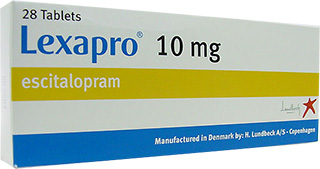Medication Overview
Lexapro, known generically as escitalopram, is a prescription medication belonging to the class of drugs called selective serotonin reuptake inhibitors (SSRIs). It is primarily used in the treatment of major depressive disorder and generalized anxiety disorder. Lexapro functions by increasing the levels of serotonin, a neurotransmitter, in the brain, thereby helping improve mood and reduce anxiety.
Dosage and Administration
The usual starting dosage for adults with depression or anxiety is 10 mg once daily, which may be increased by healthcare providers to 20 mg depending on the individual’s response and tolerability. It is important to follow the prescribed dosage regimen and not to alter the dose without consulting a healthcare provider. Lexapro can be taken with or without food, and it is advised to take it at the same time each day to maintain consistent blood levels.
Mechanism of Action
Lexapro works by specifically targeting the serotonin reuptake process. It prevents the reabsorption of serotonin into neurons, leading to increased serotonin levels in the synaptic cleft. This elevation of serotonin enhances mood stability and anxiety control. This targeted action makes Lexapro different from older types of antidepressants that affect multiple neurotransmitter systems.
Common Side Effects
Patients may experience side effects such as nausea, insomnia, fatigue, and decreased libido while taking Lexapro. While these adverse effects are often mild and transient, patients should report any persistent or bothersome symptoms to their healthcare provider. Adjustments to the dosage or treatment may be necessary based on the individual’s side effect profile and therapeutic response.
Drug Interactions
Lexapro can interact with a variety of medications, including monoamine oxidase inhibitors (MAOIs), non-steroidal anti-inflammatory drugs (NSAIDs), and other SSRIs or SNRIs. Combination with these drugs can increase the risk of serotonin syndrome, bleeding tendencies, or other adverse reactions. Patients should inform their healthcare provider about all medications they are taking, including over-the-counter drugs and herbal supplements.
Contraindications and Precautions
Lexapro is contraindicated in patients with known hypersensitivity to escitalopram or citalopram. It should not be used in patients taking MAOIs or those who have taken MAOIs within the last 14 days. Caution is advised for patients with a history of bipolar disorder, as Lexapro may trigger manic episodes. A thorough psychiatric and medical history should be reviewed before initiating therapy.
Use in Specific Populations
In pregnant patients, Lexapro should be used only if the potential benefit justifies the potential risk to the fetus. It is known to pass into breast milk, so breastfeeding mothers should consider either discontinuing the drug or not breastfeeding. Dosage adjustments may be necessary for elderly patients or those with hepatic impairment, as they may experience increased exposure to the drug due to altered pharmacokinetics.
Monitoring and Evaluation
Therapeutic effects of Lexapro typically manifest within 4 to 6 weeks, although some patients may notice improvements sooner. Regular follow-up appointments with healthcare providers are essential to monitor the patient’s progress, dosing efficacy, and emergence of side effects. Assessment tools for depression and anxiety can also help in evaluating the effectiveness of the treatment regimen.
Patient Counseling Information
Patients should be counseled on the importance of adherence to their prescribed Lexapro regimen and advised not to discontinue use abruptly to avoid withdrawal symptoms. They should also be informed about potential side effects and the importance of reporting any unusual changes in mood or behavior. Encouraging patients to voice their concerns can contribute to better management of their mental health conditions.







Reviews
There are no reviews yet.